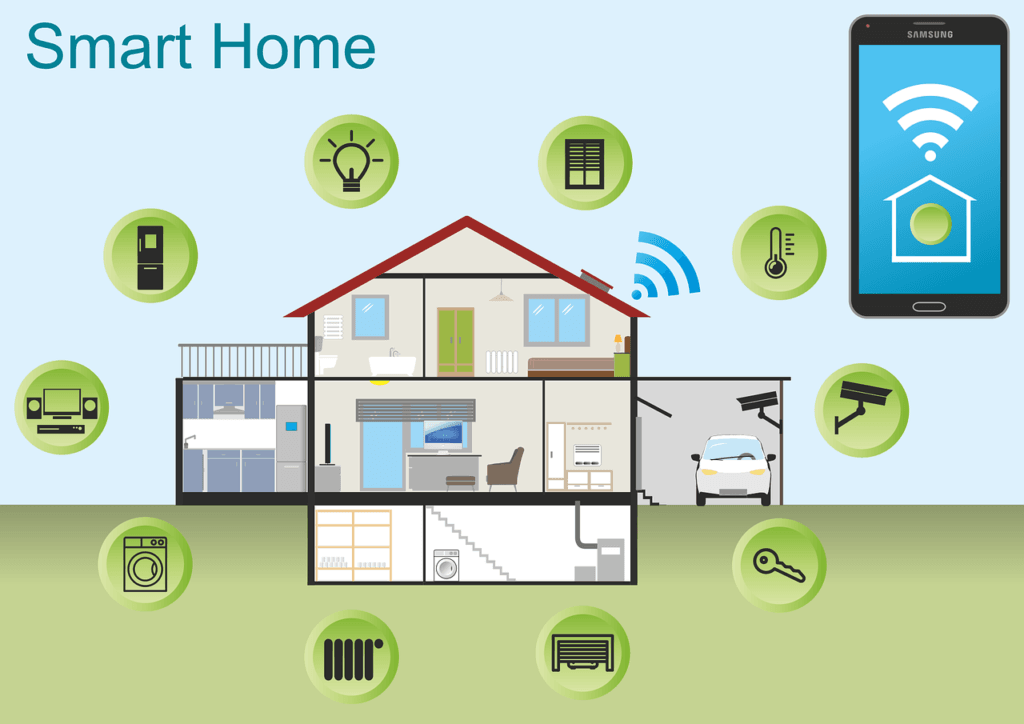Ambient Invisible Intelligence (AII) represents a transformative leap in technology, where devices and systems operate seamlessly in the background, enhancing our lives without demanding our attention. This concept builds on the foundations of Ambient Intelligence (AmI) and invisible technology, integrating advanced sensors, artificial intelligence (AI), and the Internet of Things (IoT) to create environments that are context-aware, adaptive, and anticipatory.
The Evolution of Ambient Invisible Intelligence
The journey of AII began with the idea of making technology less intrusive and more integrated into our daily lives. Early examples include smart home devices like the Nest Learning Thermostat and smart lighting systems that adjust based on motion or natural light levels. These devices demonstrated the potential of technology to operate unobtrusively, providing convenience and efficiency without constant user input.
As technology advanced, the concept of AII emerged, incorporating very low-power wireless communication, energy harvesting, and low-power electronics sensors. These innovations enable devices to operate with minimal energy consumption, making them virtually invisible while still providing valuable insights and functionalities.
Impact of AII in 2025
By 2025, AII is expected to revolutionize various aspects of our lives, from smart homes and healthcare to industrial applications and urban planning. Here are some key areas where it will make a significant impact:
- Smart Homes: AII will enhance the functionality of smart home devices, making them more intuitive and responsive. For example, smart thermostats will not only learn user preferences but also anticipate needs based on weather forecasts and occupancy patterns. Lighting systems will adjust automatically to create the perfect ambiance, and security systems will provide real-time alerts based on unusual activities.
- Healthcare: In healthcare, AII will enable continuous monitoring of patients through wearable devices and smart sensors. These systems will detect early signs of health issues, allowing for timely interventions and personalized treatment plans. Hospitals will use it to optimize patient care, reduce errors, and improve overall efficiency.
- Industrial Applications: This will transform manufacturing and logistics by providing real-time data on equipment performance, inventory levels, and supply chain status. This will lead to improved efficiency, reduced downtime, and better decision-making. For instance, sensors embedded in machinery will predict maintenance needs, preventing costly breakdowns.
- Urban Planning: Cities will leverage it to create smarter, more sustainable urban environments. Traffic management systems will use real-time data to optimize traffic flow, reduce congestion, and improve public transportation. Environmental sensors will monitor air quality and noise levels, helping cities address pollution and enhance the quality of life for residents.
Models Used for Ambient Invisible Intelligence
Several models and technologies underpin the development and implementation of AII. These include:
- Very Low-Power Wireless Communication: Technologies like Bluetooth Low Energy (BLE), Wi-Fi, and 5G enable devices to communicate with minimal energy consumption. This is crucial for maintaining the invisibility of AII systems while ensuring reliable data transmission.
- Energy Harvesting: This technology allows devices to generate power from ambient sources such as light, heat, or motion. Energy harvesting ensures that AII devices can operate indefinitely without the need for battery replacements, making them truly invisible.
- Low-Power Electronics Sensors: Advances in sensor technology have led to the development of highly efficient sensors that can operate on minimal power. These sensors collect data on various parameters such as temperature, motion, and humidity, enabling AII systems to make informed decisions.
- Artificial Intelligence and Machine Learning: AI and machine learning algorithms analyze the data collected by sensors to identify patterns, predict user needs, and make context-aware decisions. These algorithms continuously learn and adapt, improving the performance and accuracy of AII systems over time.
Applications
AII is already being integrated into various applications, enhancing user experiences and improving efficiency. Some notable examples include:
- Amazon Echo and Google Home: These smart speakers use it to respond to voice commands and perform tasks without requiring a visible interface. They can control smart home devices, provide information, and even anticipate user needs based on past interactions.
- Healthcare Monitoring Systems: Hospitals are using it to monitor patients’ vital signs and detect early signs of health issues. Wearable devices equipped with sensors collect data continuously, allowing healthcare providers to offer personalized care and timely interventions.
- Smart Retail: Retailers are leveraging it to enhance the shopping experience. Smart shelves equipped with sensors track inventory levels and alert staff when restocking is needed. Personalized recommendations are provided to customers based on their shopping behavior and preferences.
- Industrial IoT: In manufacturing, AII is used to monitor equipment performance and predict maintenance needs. Sensors embedded in machinery collect data on various parameters, allowing for proactive maintenance and reducing downtime.
- Urban Infrastructure: Cities are implementing AII to optimize traffic management, monitor environmental conditions, and improve public safety. For example, smart traffic lights adjust their timing based on real-time traffic data, reducing congestion and improving traffic flow.
Detailed Example: AII in Smart Homes

Imagine a typical day in a smart home powered by AII. As you wake up, the smart thermostat has already adjusted the temperature to your preferred setting based on your usual wake-up time and the current weather forecast. The smart lighting system gradually increases the brightness in your bedroom, simulating a natural sunrise to help you wake up more comfortably.
As you head to the kitchen, the coffee maker has already started brewing your favorite coffee, triggered by a motion sensor that detected your movement. The refrigerator, equipped with AII, has monitored the inventory and noticed that you are running low on milk. It sends a notification to your smartphone, offering to place an order for you.
Throughout the day, the smart home system continues to adapt to your needs. The lighting adjusts based on the natural light levels, and the security system monitors for any unusual activity, sending real-time alerts to your phone if necessary. In the evening, the smart home system prepares your home for relaxation by dimming the lights and adjusting the thermostat to a comfortable setting.
This seamless integration of AII into your daily routine enhances convenience, comfort, and security without requiring constant user input. The technology operates invisibly in the background, anticipating your needs and making adjustments to improve your quality of life.
Ambient Invisible Intelligence represents a significant step forward in the evolution of technology. By seamlessly integrating advanced sensors, AI, and IoT, AII creates environments that are context-aware, adaptive, and anticipatory. In 2025, AII will transform various aspects of our lives, from smart homes and healthcare to industrial applications and urban planning. As technology continues to advance, the potential for AII to enhance our lives and improve efficiency is limitless.
The future of AII is bright, and its impact will be felt across industries and everyday life. As we move towards a world where technology operates invisibly in the background, we can look forward to a more intuitive, efficient, and connected future.









